On the ice, twin hockey players Austin and Owen Plumert constitute a double threat.
Eager to practice. Eager to play. Eager to excel and do their best for their team as they skate into challenges head-on, with fearless determination.
Alas, one day they each met a foe they could not dodge: hip pain.
The sharp, throbbing pain became so great, it forced both brothers to take a break from the sport they love.
But their timeout was not permanent.
Thanks to minimally invasive hip surgery to reshape the femoral head of their hip joint, the 17-year-old Hudsonville, Michigan, twins returned to the ice rink to skate, pass, check and score goals.
“When I got to my first game (post-surgery), I finally realized I didn’t have any pain anymore,” Owen said. “That was when I really knew that it had worked.”
At home on the ice
Identical twins, Austin and Owen share an identical passion for hockey.
They began to play hockey at age 5 and now play on a travel team and on the Hudsonville High School team. Their 19-year-old brother, Jaden, plays, too.
Their parents, Becky and Dan, are their biggest fans.
“The rink is like my second home,” Owen said. “I am always there. When I get done with school, that’s always something to look forward to—playing hockey.”
They have played soccer and baseball and they still play lacrosse. But hockey ranks No. 1 for both teens.
“I like the physicality of it,” Austin said. “It’s fast and you have to be worried about so many other things—like passing, where people are. You constantly have in the back of your head that you are going to get hit at some point, so you have to be quick in your movements, so you don’t get hit.”
Hockey is the center of their social life, as well. They have formed close friendships with teammates. And through travel teams, they have become friends with players from high school rivals.
The hockey community is like a family, Becky said.
For Owen and Austin, giving up the sport was unthinkable.
Hip pain struck Owen first.
Two years ago, as he went from cross country practice to hockey practice, he noticed a sharp pain in his hips. It hurt to walk upstairs.
On the ice, with adrenaline pumping, he didn’t notice the pain. But his parents could tell it affected his skating.
At first, Owen thought he had pulled a groin muscle. But when the pain persisted, his parents brought him to the Spectrum Health sports medicine team.
After conservative treatments, such as anti-inflammatories, failed to fix the problem, Owen saw Travis Menge, MD, a sports medicine specialist and orthopedic surgeon who specializes in hip arthroscopy and joint preservation.
Scans showed a structural abnormality of Owen’s hip joint.
“The femoral head is normally shaped like a nice round ball, like a basketball or marble,” Dr. Menge said.
In Owen’s hips, extra bone growth caused the femoral head to be oblong-shaped, like a watermelon.
That caused impingement on the labrum, which is a ring- or gasket-like structure around the socket. Tears in the labrum caused pain and limited the mobility of his hip joints.
“Impingement typically develops in the teen years, when growth plates are growing and then closing,” Dr. Menge said. “The structural abnormality leads to increased damage in the joint.”
Genetics and activity levels play a role in causing a misshapen ball in the hip joint, Dr. Menge said. It’s more common in teens who do a lot of running, skating or other repetitive motions—but not all active teens develop the condition.
Twenty years ago, a hip surgery would have required a large incision, several days in the hospital and at least a year of recovery.
“The good news is that advances in technology and surgical techniques have allowed us to address these structural abnormalities and damage in the hip through an arthroscopic, minimally invasive approach,” Dr. Menge said.
“We can address all of the damage and correct the structural problems through a few small poke holes.”
Headed to surgery
At the age of 15, in April 2021, Owen underwent his first surgery, on his left hip.
Dr. Menge shaved down the extra bone on the hip joint’s femoral head, creating a round shape. He also repaired tears to the labrum and damage to the cartilage.
Three months later, Owen underwent the same surgery on his right hip.
In November, after much physical therapy, strengthening and mobility exercises, Owen began to practice with his high school hockey team.
Austin did not experience the same hip pain as his brother. At least, not at first.
He noticed a popping sound in his left hip. And he could tell something interfered with the mobility of his hip joint.
One day playing hockey, he took a hit.
“I landed on it wrong and I think that finally was the tearing point,” Austin said. “I could barely walk after. It was severe pain.”
In April 2022, after hockey season wrapped up, he underwent the same arthroscopic surgery as his brother.
He worked for three months in rehab. In July, Dr. Menge told him he could return gradually to hockey practice.
Back on the ice
After several months away from hockey, Owen and Austin worked hard to get back in shape.
The first practices left them with sore muscles and out of breath, but that felt much better than the hip pain they had experienced before.
“I think the surgery is great,” Owen said. “Dr. Menge obviously did really good work.”
The teens credited their rehab team, as well.
“They definitely did a good job,” Austin said. “I got my mobility back and my strength back, so I could get back (to hockey) as (quick as I could.)”
Their parents could see the joy in their sons’ faces when they put on their ice skates, gloves and helmet and picked up their hockey sticks.
“You could see the light come back in their eyes. It was, ‘Yes, I can do this again,’” Becky said.
“I’m glad they can do it without pain,” Dan, their dad, said.
Over the years, Dan has seen how much hockey means to Owen and Austin—and how much they have gained from the sport.
“They have been able to learn what individual contributions are and also how it has to be a team effort,” Dan said. “They learn a lot of life lessons about winning and about losing and about doing your best.”
Long-term benefits
Helping Owen and Austin return to hockey has been very rewarding, Dr. Menge said. He is the senior academic advisor and the leader for research and innovation at Spectrum Health orthopedics.
“That’s the reason I do what I do,” he said. “I enjoy seeing people get back to what they love doing—without pain or other limitations.”
The benefits may extend beyond their high school hockey days, he added.
“Another major advantage of correcting the structural abnormalities is that we reduce the likelihood of further hip issues later in life and reduce the need for total hip replacement,” he said.
Dr. Menge credited the teens with diligently following the post-surgery rehabilitation.
“They are very hard-working, dedicated kids,” said Tarra Geertman, an athletic trainer in the orthopedics department who worked with the twins. “These guys did their part. They seemed to have a good attitude throughout the whole recovery process.”
Hip pain is common in active people and, in many cases, surgery is not necessary, Dr. Menge said.
He advises people to first try rest, anti-inflammatory medication and reducing or modifying activity. If the condition does not improve after four to six weeks, he recommends seeing a sports medicine specialist.
And if considering surgery, he advises consulting a surgeon who specializes in sports medicine and joint preservation—and who will perform a minimally invasive, arthroscopic surgery.
What’s next for Owen and Austin’s hockey career?
They both hope to play junior hockey after high school, and then play on a college team.
“I just love hockey,” Owen said. “I just want to keep playing hockey and get as good as I can.”



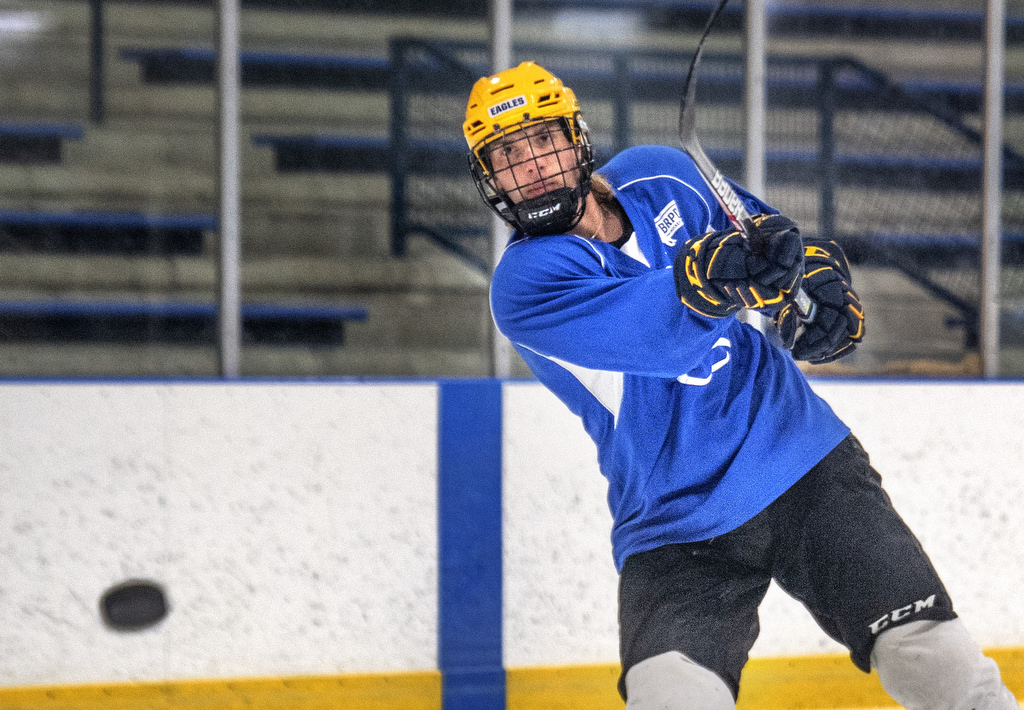

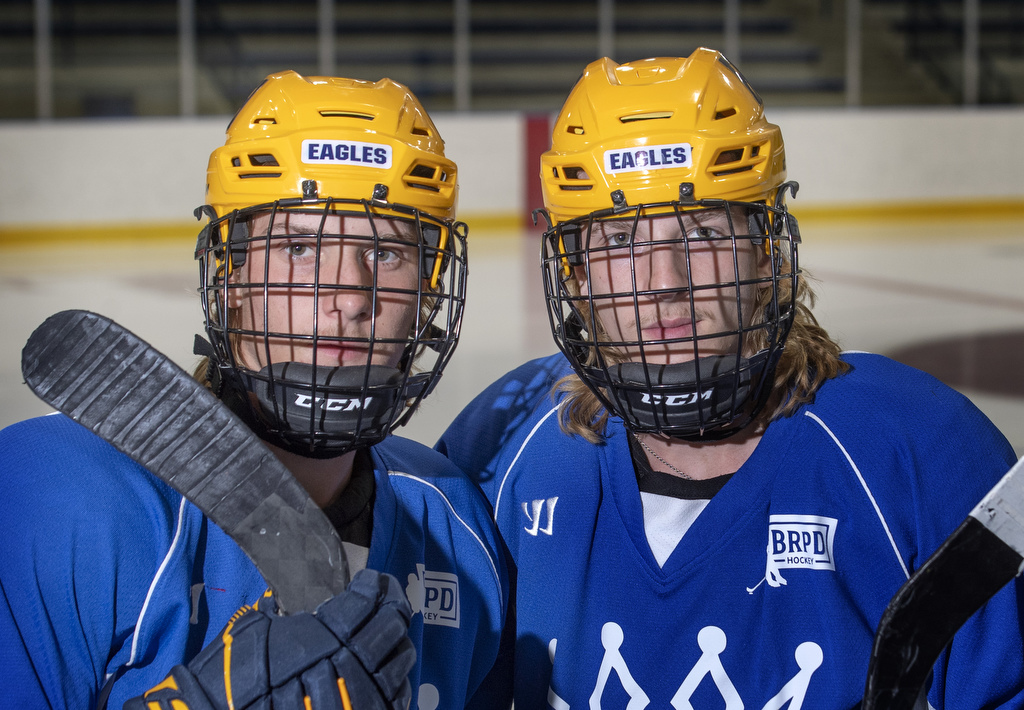
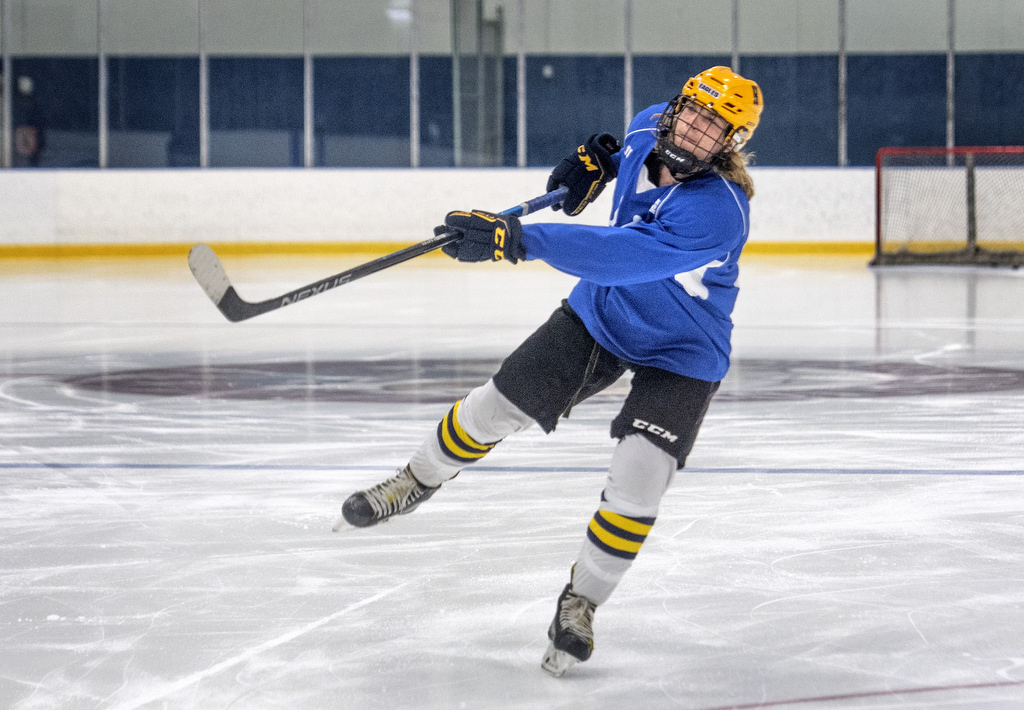



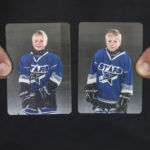





 /a>
/a>
 /a>
/a>
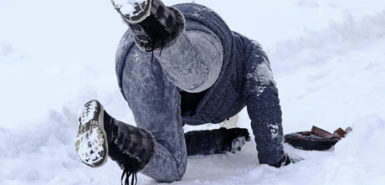 /a>
/a>